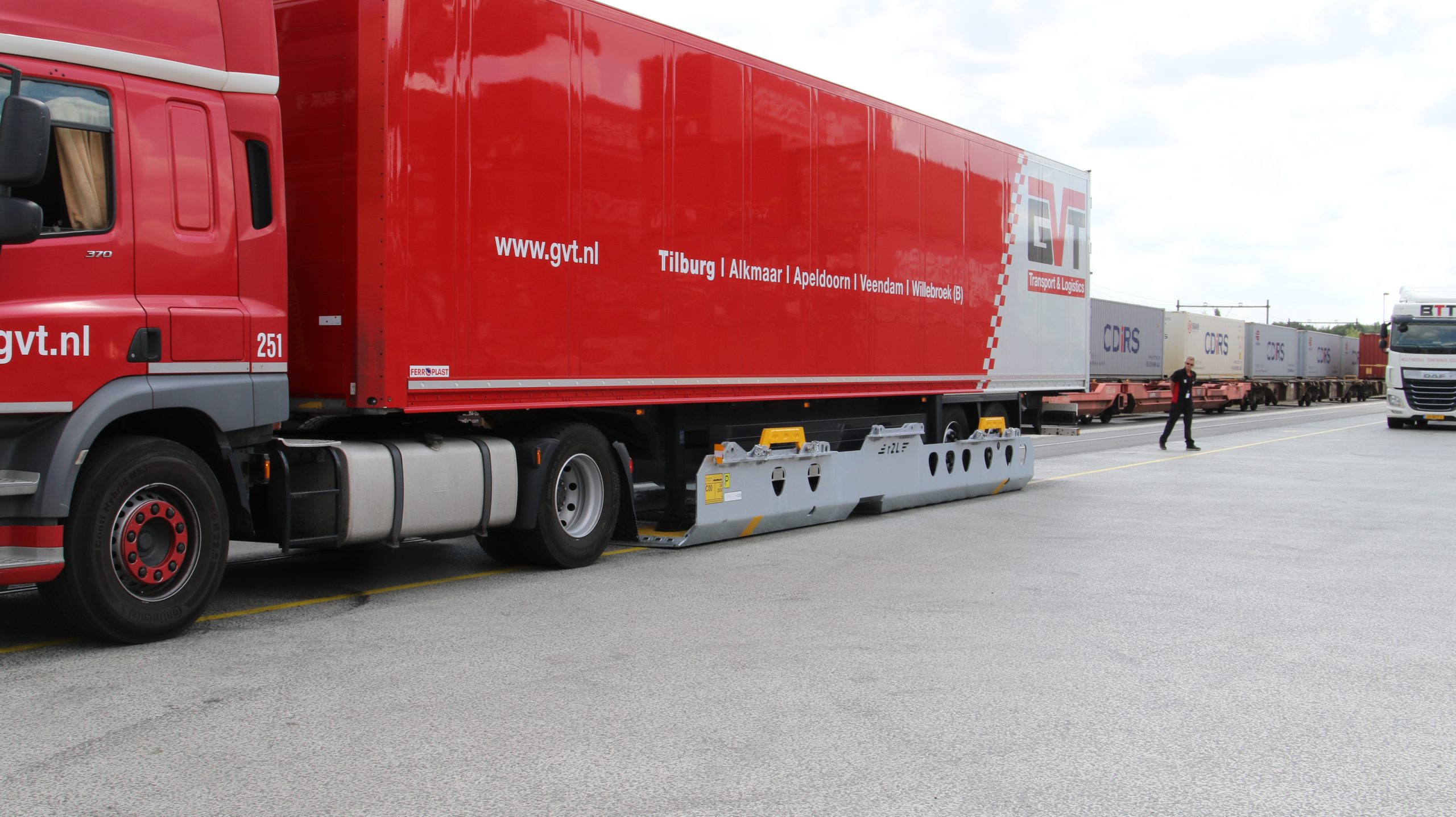Non-craneable trailers on track for Tilburg-Rzepin line
A technique to transport non-craneable trailers by rail is now available for the train service between Tilburg in the Netherlands and Rzepin, in western Poland.
The collaboration between GVT, VTG and Vega has led to a new concept in the Netherlands. The trailer is placed on the train by the truck itself, which rolls off the train thereafter. This is different from other systems, where the trailer is lifted by a dedicated system. After arrival of the train at the destination, the last mile can be carried out by road. But for the long haul, the truck is off the road. And this is a gain for the rail freight sector.

Flexibility
You are much more flexible this way, said Roland Verbraak, general director of GVT. GVT plans to set up the service for daily departures in both directions. Tests are currently carried out, and next week the first operation is planned. The Tilburg-Rzepin train service is an existing connection, and an important line for rail freight traffic between the Netherlands and Poland.
At the moment, non-craneable trailers are rarely seen on the track, because comparable techniques are only available in a few places. In Poland, the technology is used in the CLIP terminal in Poznan, and TX Lostiks has recently launched the system in Hungary. The EU is also financing a large-scale project for a new rail-road terminal at Calais, where non-craneable trailers can be put on rail.
morenews
Networking dinner 1
Networking dinner Networking is the most crucial element of RailFreight Summit! On the evening of 16 April 2024 from 18:00-21:00, a networking dinner will take place. This seated dinner offers the perfect opportunity to get together with your fellow industry professionals in a formal setting. Enjoy a multiple-course dinner, and drinks while making important new… Read more ›
How can this new terminal boost EU-Balkans intermodal transport?
On 19 April, Rihard Dobo will also speak at the RailFreight Summit Poland. He will explain the significance of the Horgos Terminal project and its potential to boost intermodal traffic to and from the Western Balkans and the broader southeast Europe region. The Serbia-Hungary bottleneck “As Serbia and the wider Western Balkan region is not… Read more ›
Malaszewicze upgrade may be financed by Polish government
The EU has in fact decided not to fund the modernisation project planned in the Małaszewicze Transshipment Area. The area includes the terminals Kobylany, Małaszewicze, Bór, and Chotyłów. This project was put on hold, waiting for possible public funds, which now may be on their way. To see this crucial transshipment area with your own… Read more ›
